Technical Support技术支持
CONTACT US
 400 179 0116
400 179 0116
24-hour service hotline marketing@ldraft.comE-mail
marketing@ldraft.comE-mail
Interesting history of cloning
source:QiDa technoligy views:1552 time:2024-07-10
Interesting history of cloning
Lost in all the buzz about cloning is the fact that cloning is nothing new: its rich scientific history spans more than 100 years. The following landmark examples will take you on a journey through time, where you can learn more about the history of cloning.
One day in 1885, for the first time ever, artificial embryo pairs were displayed - the astonishing discovery of sea urchins
Hans Adolf Eduard Driesch
Sea urchins are relatively simple creatures that are very useful for studying their development. The Dreisch study showed that by simply shaking a two-cell embryo of a sea urchin, the cells could be separated. When separated, each cell grows into a complete sea urchin.
The experiment showed that each cell in the early embryo has its own complete genetic instructions and can grow into a complete organism.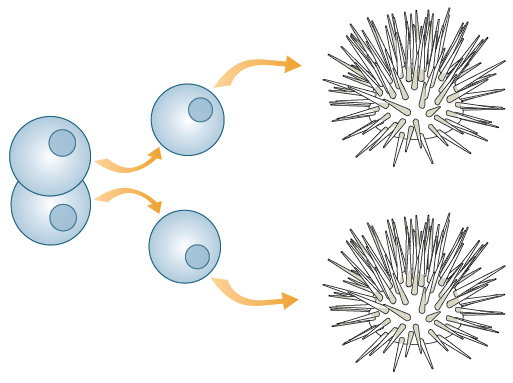 1902 discovery - Artificial embryo pairs of vertebrates
Salamander Hans Spemann
Spellman's first challenge was to figure out how to divide the two cells in the embryo that are more viscous than the sea urchin cells. Spellman created a small noose from a strand of the baby's hair and pulled it tight between two cells of the salamander embryo until they separated. Each cell grows into an adult salamander. Spemann also tried to divide more advanced salamander embryos in this way, but he found that the cells in these embryos were not successful in developing into adult salamanders.
The experiment showed that embryos from more complex animals can also "pair" to form multiple identical organisms, but only to a certain stage of development.
1902 discovery - Artificial embryo pairs of vertebrates
Salamander Hans Spemann
Spellman's first challenge was to figure out how to divide the two cells in the embryo that are more viscous than the sea urchin cells. Spellman created a small noose from a strand of the baby's hair and pulled it tight between two cells of the salamander embryo until they separated. Each cell grows into an adult salamander. Spemann also tried to divide more advanced salamander embryos in this way, but he found that the cells in these embryos were not successful in developing into adult salamanders.
The experiment showed that embryos from more complex animals can also "pair" to form multiple identical organisms, but only to a certain stage of development. The discovery in 1928 that the cell nucleus controls the development of the embryo
Salamander Hans Spemann
Spemann again tied a lock of baby hair to a noose and temporarily squeezed a fertilized salamander egg, pushing the nucleus to one side of the cytoplasm. The egg divides into cells, but only on one side of the nucleus. After four cell divisions had formed 16 cells, Spemann loosened the noose and let the nucleus of one of the cells slide back to the non-dividing side of the egg. He used a lasso to separate this "new" cell from the rest of the embryo. Individual cells grow into new salamander embryos, as do the remaining isolated cells.
In essence, this is the first example of nuclear transfer, an experiment that shows that the nucleus from an early embryonic cell guides the salamander to complete growth, effectively replacing the nucleus in a fertilized egg.
The discovery in 1928 that the cell nucleus controls the development of the embryo
Salamander Hans Spemann
Spemann again tied a lock of baby hair to a noose and temporarily squeezed a fertilized salamander egg, pushing the nucleus to one side of the cytoplasm. The egg divides into cells, but only on one side of the nucleus. After four cell divisions had formed 16 cells, Spemann loosened the noose and let the nucleus of one of the cells slide back to the non-dividing side of the egg. He used a lasso to separate this "new" cell from the rest of the embryo. Individual cells grow into new salamander embryos, as do the remaining isolated cells.
In essence, this is the first example of nuclear transfer, an experiment that shows that the nucleus from an early embryonic cell guides the salamander to complete growth, effectively replacing the nucleus in a fertilized egg. 1952 discovery from frog eggs - the first successful nuclear transfer
By Robert Briggs and Thomas King
Briggs and King transferred nuclei from early tadpole embryos into enucleated frog eggs (a type of frog egg with its nucleus removed). The resulting cells develop into tadpoles.
The scientists used the nuclei of early embryos to create many normal tadpole clones. But as with Spellman's salamander experiment, cloning using donor nuclei from more advanced embryos was not successful: the few tadpole clones that survived grew abnormally.
Most importantly, this experiment shows that nuclear transfer is a viable cloning technique. It also reinforces two earlier observations. First, the nucleus directs cell growth and, ultimately, the development of the organism. Second, embryonic cells early in development are more suitable for cloning than cells late in development.
1952 discovery from frog eggs - the first successful nuclear transfer
By Robert Briggs and Thomas King
Briggs and King transferred nuclei from early tadpole embryos into enucleated frog eggs (a type of frog egg with its nucleus removed). The resulting cells develop into tadpoles.
The scientists used the nuclei of early embryos to create many normal tadpole clones. But as with Spellman's salamander experiment, cloning using donor nuclei from more advanced embryos was not successful: the few tadpole clones that survived grew abnormally.
Most importantly, this experiment shows that nuclear transfer is a viable cloning technique. It also reinforces two earlier observations. First, the nucleus directs cell growth and, ultimately, the development of the organism. Second, embryonic cells early in development are more suitable for cloning than cells late in development.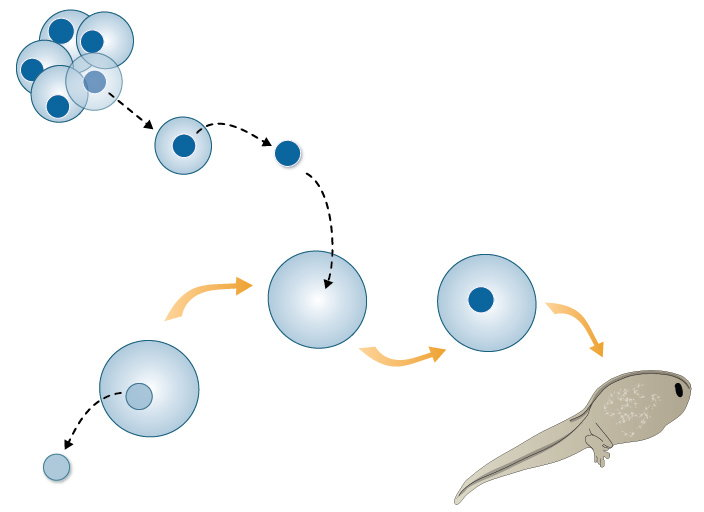 1958 Discovery from frog eggs - Nuclear transfer of differentiated cells
John Gurdon
Gurdon transplanted the nuclei of tadpole intestinal cells into the enucleated frog eggs. In this way, he created tadpoles that were genetically identical to those from which intestinal cells were extracted.
The experiment showed that, despite previous failures, nuclei from fully developed animal cells could be used for cloning. Importantly, it shows that even as cells divide and differentiate, they retain all their genetic material (though some wonder if the donor DNA came from stem cells, which can differentiate into many types of cells).
1958 Discovery from frog eggs - Nuclear transfer of differentiated cells
John Gurdon
Gurdon transplanted the nuclei of tadpole intestinal cells into the enucleated frog eggs. In this way, he created tadpoles that were genetically identical to those from which intestinal cells were extracted.
The experiment showed that, despite previous failures, nuclei from fully developed animal cells could be used for cloning. Importantly, it shows that even as cells divide and differentiate, they retain all their genetic material (though some wonder if the donor DNA came from stem cells, which can differentiate into many types of cells).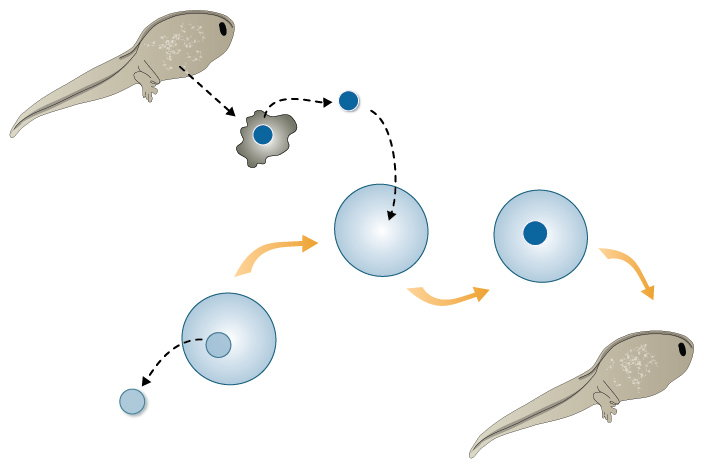 Results from a 1975 study on rabbits - the first mammalian embryos produced by nuclear transfer
J.Derek Bromhall
Mammalian egg cells are much smaller than those of frogs or salamanders, making them harder to manipulate. Bromhall used glass straws as straws to transfer the nuclei of rabbit embryonic cells into the enucleated rabbit egg cells. When the morula, or advanced embryo, developed a few days later, he considered the procedure a success.
The experiment showed that mammalian embryos could be created by nuclear transfer. To prove that the embryo could continue to develop, Bromhall had to place it in the womb of a mother rabbit. He never did the experiment.
1984 - Sheep became the first mammal to be created by nuclear transfer
Steen Willadsen
Willadsen chemically isolated one cell from an 8-cell lamb embryo. He fuses it with a small electric shock to a nucleated egg cell. Fortunately, the new cells began to divide.
By then, IVF techniques had been developed and used successfully to help couples have children. So, a few days later, Willadsen placed the lamb embryo into the womb of a surrogate ewe. Three live lambs were born.
The experiment showed that it is possible to clone mammals by nuclear transfer, and that cloning can be fully developed. Although the donor nucleus came from an early embryonic cell, the experiment was considered highly successful.
Results from a 1975 study on rabbits - the first mammalian embryos produced by nuclear transfer
J.Derek Bromhall
Mammalian egg cells are much smaller than those of frogs or salamanders, making them harder to manipulate. Bromhall used glass straws as straws to transfer the nuclei of rabbit embryonic cells into the enucleated rabbit egg cells. When the morula, or advanced embryo, developed a few days later, he considered the procedure a success.
The experiment showed that mammalian embryos could be created by nuclear transfer. To prove that the embryo could continue to develop, Bromhall had to place it in the womb of a mother rabbit. He never did the experiment.
1984 - Sheep became the first mammal to be created by nuclear transfer
Steen Willadsen
Willadsen chemically isolated one cell from an 8-cell lamb embryo. He fuses it with a small electric shock to a nucleated egg cell. Fortunately, the new cells began to divide.
By then, IVF techniques had been developed and used successfully to help couples have children. So, a few days later, Willadsen placed the lamb embryo into the womb of a surrogate ewe. Three live lambs were born.
The experiment showed that it is possible to clone mammals by nuclear transfer, and that cloning can be fully developed. Although the donor nucleus came from an early embryonic cell, the experiment was considered highly successful.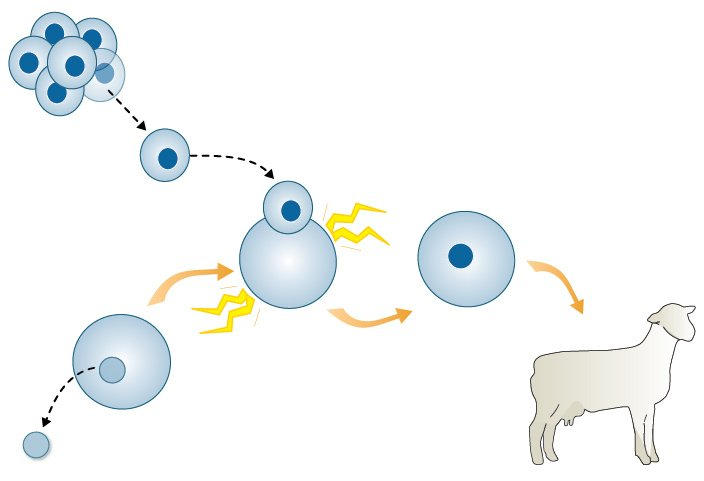 1987 - Nuclear transfer of embryonic cells using cows
Neal First, Randal Prather and Willard Eyestone
The method used by First, Prather, and Eyestone was very similar to that used by Willadsen on sheep, producing two cloned calves. Their names are Fusion and Copy.
The experiment adds cows to the list of mammals that can be cloned by nuclear transfer. Nevertheless, mammalian cloning is limited to the use of embryonic cells as nuclear donors. Cloning using the nuclei of cells that have differentiated into adult cells is still considered impossible.
1987 - Nuclear transfer of embryonic cells using cows
Neal First, Randal Prather and Willard Eyestone
The method used by First, Prather, and Eyestone was very similar to that used by Willadsen on sheep, producing two cloned calves. Their names are Fusion and Copy.
The experiment adds cows to the list of mammals that can be cloned by nuclear transfer. Nevertheless, mammalian cloning is limited to the use of embryonic cells as nuclear donors. Cloning using the nuclei of cells that have differentiated into adult cells is still considered impossible. 1996 - Nuclear transfer of laboratory cells
Lan Wilmut and Keith Campbell
All previous cloning experiments have used donor nuclei from early-stage embryonic cells. In this experiment, the donor nucleus came from a slightly different source: cultured sheep cells that had been kept alive in the lab.
Wilmut and Campbell transferred the nuclei of cultured cells into enucleated sheep egg cells. The lambs born through the procedure were named Megan and Morag.
The experiment showed that cultured cells could provide donor nuclei for clones through nuclear transfer. Because scientists have learned how to transfer genes into cultured cells, this experiment shows that it is possible to use such modified cells to create genetically modified animals, such as cows that can make insulin in their milk for diabetics.
In 1996 Dolly the sheep was born - the first mammal to be created through somatic cell nuclear transfer
Lan Wilmut and Keith Campbell
In this landmark experiment, Wilmut and Campbell created a lamb by transferring the nucleus of an adult sheep breast cell into a nucleated egg. No mammal has ever been cloned from an adult cell before. What's the big deal?
Each cell nucleus contains a whole set of genetic information. However, by the time embryonic cells are ready to activate any gene, differentiated adult cells have turned off genes for specific functions that they do not need. When an adult nucleus is used as a donor, its genetic information must be reset to an embryonic state. Often the reset process is incomplete and the embryo fails to develop.
Out of 277 attempts, only one resulted in an embryo carried to term by a surrogate mother. The famous lamb named Dolly put cloning in the spotlight. Her arrival sparked discussion about the effects of cloning, bringing controversy to human cloning and stem cell research.
1996 - Nuclear transfer of laboratory cells
Lan Wilmut and Keith Campbell
All previous cloning experiments have used donor nuclei from early-stage embryonic cells. In this experiment, the donor nucleus came from a slightly different source: cultured sheep cells that had been kept alive in the lab.
Wilmut and Campbell transferred the nuclei of cultured cells into enucleated sheep egg cells. The lambs born through the procedure were named Megan and Morag.
The experiment showed that cultured cells could provide donor nuclei for clones through nuclear transfer. Because scientists have learned how to transfer genes into cultured cells, this experiment shows that it is possible to use such modified cells to create genetically modified animals, such as cows that can make insulin in their milk for diabetics.
In 1996 Dolly the sheep was born - the first mammal to be created through somatic cell nuclear transfer
Lan Wilmut and Keith Campbell
In this landmark experiment, Wilmut and Campbell created a lamb by transferring the nucleus of an adult sheep breast cell into a nucleated egg. No mammal has ever been cloned from an adult cell before. What's the big deal?
Each cell nucleus contains a whole set of genetic information. However, by the time embryonic cells are ready to activate any gene, differentiated adult cells have turned off genes for specific functions that they do not need. When an adult nucleus is used as a donor, its genetic information must be reset to an embryonic state. Often the reset process is incomplete and the embryo fails to develop.
Out of 277 attempts, only one resulted in an embryo carried to term by a surrogate mother. The famous lamb named Dolly put cloning in the spotlight. Her arrival sparked discussion about the effects of cloning, bringing controversy to human cloning and stem cell research.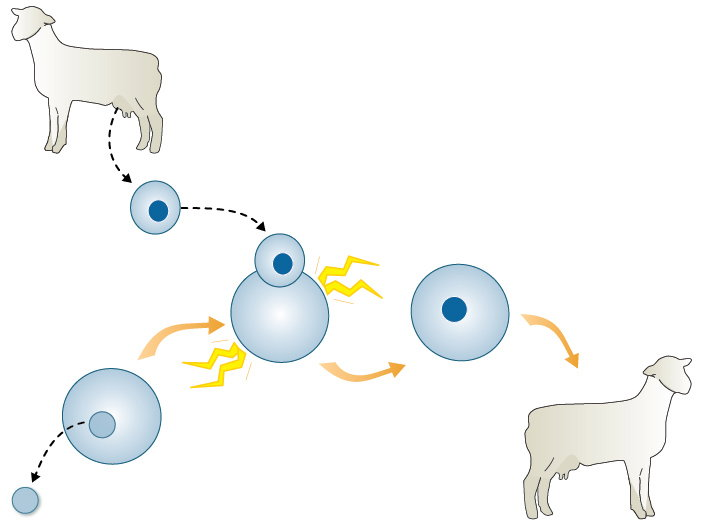 The rhesus monkey was the first primate created by embryo nuclear transfer in 1997
Li Meng, John Ely, Richard Stouffer, and Don Wolf, Li Meng, John Ely, Richard Stouffer, and Don Wolf
Primates are good models for studying human disease. Cloning identical primates would reduce genetic variation in the animals studied, reducing the number of animals needed for research.
Similar to previous cloning experiments, Wolf's team of scientists used small electric shocks to fuse early-stage embryonic cells with a nucleated monkey egg. The resulting embryos are then implanted into a surrogate mother. Of the 29 cloned embryos, two monkeys were born. A female named Nettie and a male named Ditto.
The experiment shows that primates, our closest relatives, can be cloned.
The rhesus monkey was the first primate created by embryo nuclear transfer in 1997
Li Meng, John Ely, Richard Stouffer, and Don Wolf, Li Meng, John Ely, Richard Stouffer, and Don Wolf
Primates are good models for studying human disease. Cloning identical primates would reduce genetic variation in the animals studied, reducing the number of animals needed for research.
Similar to previous cloning experiments, Wolf's team of scientists used small electric shocks to fuse early-stage embryonic cells with a nucleated monkey egg. The resulting embryos are then implanted into a surrogate mother. Of the 29 cloned embryos, two monkeys were born. A female named Nettie and a male named Ditto.
The experiment shows that primates, our closest relatives, can be cloned.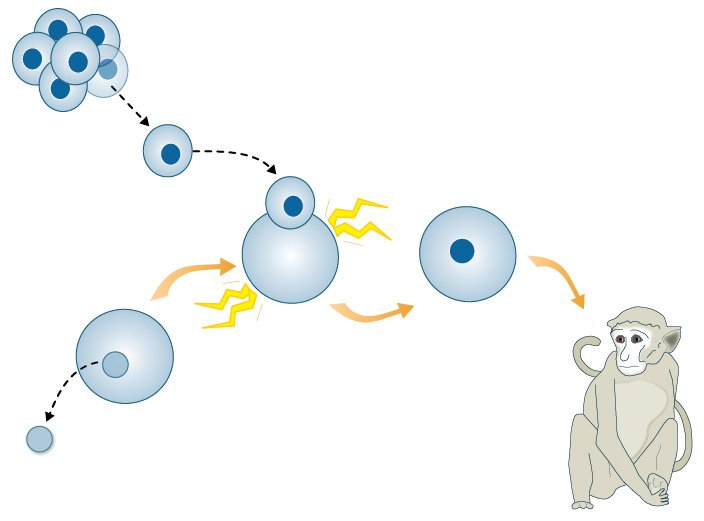 1997 - Nuclear transfer of genetically engineered laboratory cells using sheep
Angelika Schnieke, Keith Campbell, Ian Wilmut
The experiment is an exciting combination of earlier research results. Campbell and Wilmut have created a clone using the nucleus of a cultured cell. This time, the researchers introduced the human factor IX (" factor nine ") gene into the genomes of sheepskin cells grown in lab dishes. Factor IX codes for a protein that helps clot formation and is used to treat hemophilia, a genetic disorder in which blood fails to form proper clots.
To create the transgenic sheep, the scientists performed nuclear transfer using donor DNA from cultured transgenic cells. It turned out to be Polly, a sheep that produces factor IX protein in milk.
The experiment showed that sheep can be engineered to make therapeutic and other useful proteins in their milk, highlighting the potential medical and commercial uses of cloning.
1997 - Nuclear transfer of genetically engineered laboratory cells using sheep
Angelika Schnieke, Keith Campbell, Ian Wilmut
The experiment is an exciting combination of earlier research results. Campbell and Wilmut have created a clone using the nucleus of a cultured cell. This time, the researchers introduced the human factor IX (" factor nine ") gene into the genomes of sheepskin cells grown in lab dishes. Factor IX codes for a protein that helps clot formation and is used to treat hemophilia, a genetic disorder in which blood fails to form proper clots.
To create the transgenic sheep, the scientists performed nuclear transfer using donor DNA from cultured transgenic cells. It turned out to be Polly, a sheep that produces factor IX protein in milk.
The experiment showed that sheep can be engineered to make therapeutic and other useful proteins in their milk, highlighting the potential medical and commercial uses of cloning. 1998-1999 - More mammals are cloned by somatic cell nuclear transfer
Mice, cows and goats, many groups of flowers bloom
After the success of Dolly and Polley, other scientists wanted to see if similar techniques could be used to clone other mammalian species. Soon, several more animals were successfully cloned. These included genetically modified animals, clones made from fetal and adult cells, and a male mouse; All previous clones have been female.
1998-1999 - More mammals are cloned by somatic cell nuclear transfer
Mice, cows and goats, many groups of flowers bloom
After the success of Dolly and Polley, other scientists wanted to see if similar techniques could be used to clone other mammalian species. Soon, several more animals were successfully cloned. These included genetically modified animals, clones made from fetal and adult cells, and a male mouse; All previous clones have been female.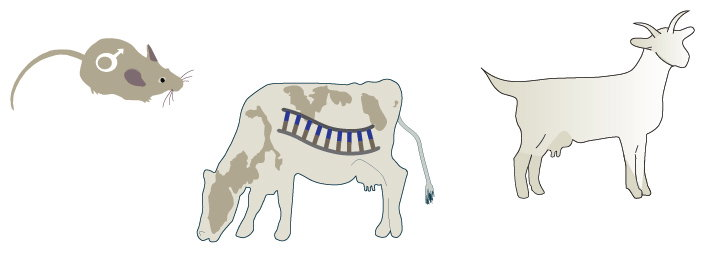 2001 - Multiple animal clones of endangered animals through somatic cell nuclear transfer
Gaur and Mouflon
As the list of successfully cloned animals grows, scientists are exploring cloning as a way to create animals of endangered or extinct species. One challenge in cloning endangered and extinct species is finding closely related animals to act as egg donors and surrogating. Tall deer and sheep were chosen in part because they are close relatives of domestic cattle and sheep, respectively.
In 2009, another team of researchers cloned the first extinct animal, a Spanish mountain goat named Bucardo, using goats as egg donors and surrogates. Unfortunately, a child who survived the pregnancy died shortly after birth from a lung defect.
2001 - Multiple animal clones of endangered animals through somatic cell nuclear transfer
Gaur and Mouflon
As the list of successfully cloned animals grows, scientists are exploring cloning as a way to create animals of endangered or extinct species. One challenge in cloning endangered and extinct species is finding closely related animals to act as egg donors and surrogating. Tall deer and sheep were chosen in part because they are close relatives of domestic cattle and sheep, respectively.
In 2009, another team of researchers cloned the first extinct animal, a Spanish mountain goat named Bucardo, using goats as egg donors and surrogates. Unfortunately, a child who survived the pregnancy died shortly after birth from a lung defect. In 2007, the generation of primate embryonic stem cells through somatic cell nuclear transfer - rhesus monkeys made a major contribution
Shoukhrat Mitalipov and colleagues
The researchers took a cell from an adult monkey and fused it with a nucleated egg cell. The embryo is allowed to develop for a period of time, and then its cells grow in a petri dish. These cells, because they can differentiate into any type of cell, are called embryonic stem cells.
The experiment shows that researchers have been trying to perform nuclear transfer in primates for years without success, and that this is possible. It opens the door to therapeutic cloning in humans: creating individual-specific stem cells that can be used to treat or study disease.
In 2007, the generation of primate embryonic stem cells through somatic cell nuclear transfer - rhesus monkeys made a major contribution
Shoukhrat Mitalipov and colleagues
The researchers took a cell from an adult monkey and fused it with a nucleated egg cell. The embryo is allowed to develop for a period of time, and then its cells grow in a petri dish. These cells, because they can differentiate into any type of cell, are called embryonic stem cells.
The experiment shows that researchers have been trying to perform nuclear transfer in primates for years without success, and that this is possible. It opens the door to therapeutic cloning in humans: creating individual-specific stem cells that can be used to treat or study disease. 2013 - Generation of human embryonic stem cells by nuclear transfer from human skin
Shoukhrat Mitalipov and colleagues
Mitalipov and his colleagues overcame decades of technical challenges and pioneered the use of somatic cell nuclear transfer to create human embryos that could serve as a source of embryonic stem cells. The resulting stem cell lines are specific to the patient they came from, a baby with a rare genetic disease.
In this experiment, researchers took a skin cell from a patient and fused it with a donor egg cell. Key to the success of the experiment was modifications to the medium in which the process was performed and the series of electrical pulses used to stimulate the egg to begin dividing.
During the 2004-05 cloning controversy, in which South Korean scientists falsely claimed to have used somatic cell nuclear transfer to create embryonic stem cell lines, the scientific community demanded stronger evidence that the process was actually successful.
2013 - Generation of human embryonic stem cells by nuclear transfer from human skin
Shoukhrat Mitalipov and colleagues
Mitalipov and his colleagues overcame decades of technical challenges and pioneered the use of somatic cell nuclear transfer to create human embryos that could serve as a source of embryonic stem cells. The resulting stem cell lines are specific to the patient they came from, a baby with a rare genetic disease.
In this experiment, researchers took a skin cell from a patient and fused it with a donor egg cell. Key to the success of the experiment was modifications to the medium in which the process was performed and the series of electrical pulses used to stimulate the egg to begin dividing.
During the 2004-05 cloning controversy, in which South Korean scientists falsely claimed to have used somatic cell nuclear transfer to create embryonic stem cell lines, the scientific community demanded stronger evidence that the process was actually successful.








